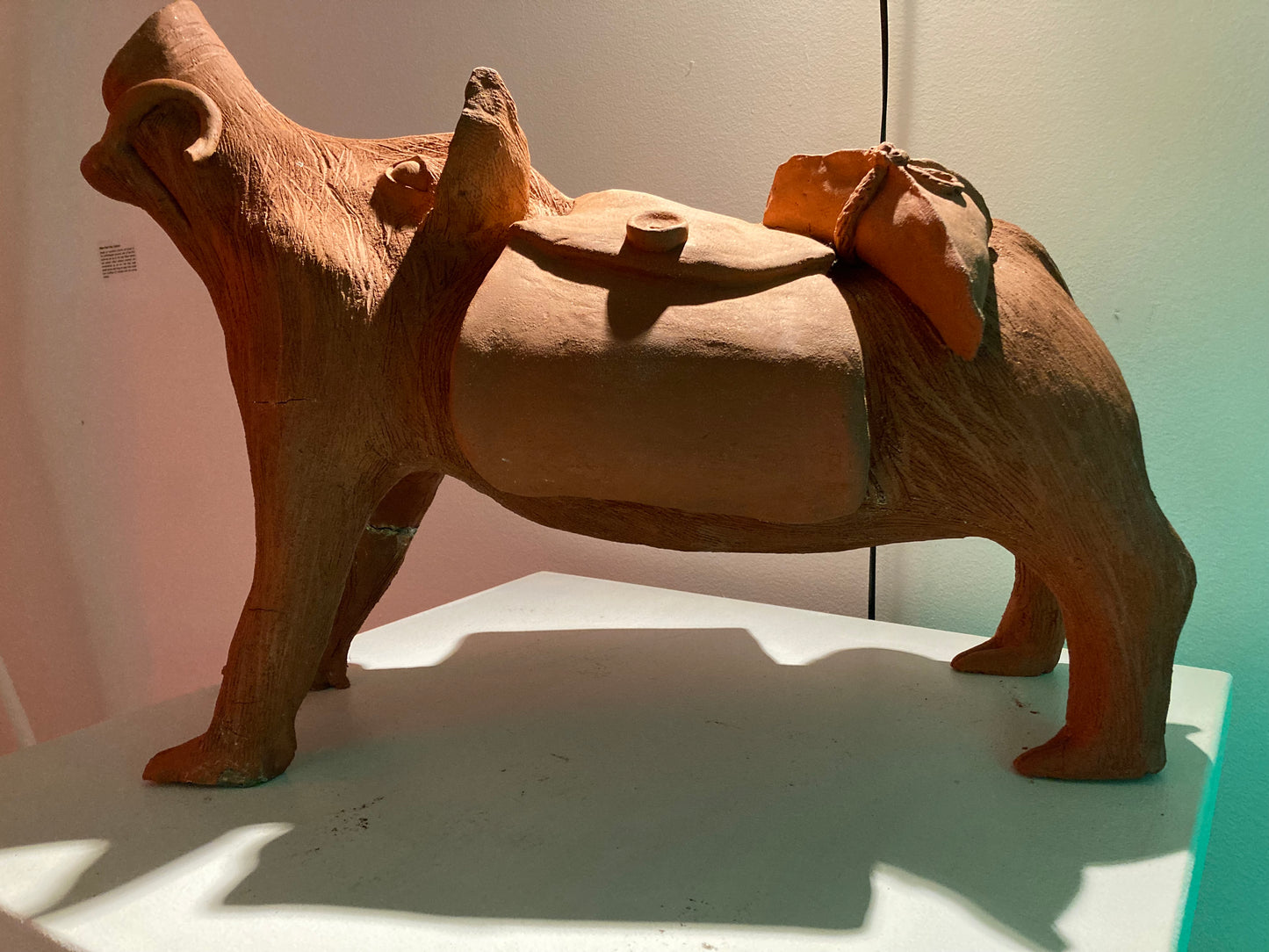MÁAZ: Recent Archeological Discoveries from Earth’s Second Colony (Transcontinental Mail Pig)
MÁAZ: Recent Archeological Discoveries from Earth’s Second Colony (Transcontinental Mail Pig)
16" wide x 20" tall x 22" long (35 lbs)
Terracotta Pig Sculpture with Gold Fills by Kaytea Petro
From:
Kaytea Petro & Julian Barber
Site Specific Installation at 780 Valencia
Materials list: Fabric, Plastic, Ceramic, Found Objects, Music and Hardware
2022
The question of extra-terrestrial exploration by humanity is simultaneously both exciting and fraught for us as artists. The idea going places Earthlings have never been before, seeing new horizons, discovering new materials and life forms is intensely alluring, yet. As an African-American who’s ancestors were non-consensually brought to the “New World”, and an Irish-Italian sixth-generation descendant of Californian emigrants, our own stories and pasts bear cautionary tales of the dangers of colonialism. We bring complicated feelings to the idea of inter-stellar Manifest Destiny. We are simultaneously energized by Afro-Futurist/Indigenous-Futurist visions of a space society that’s filled with art, joy and music, inhabited by all the brown folk and their space friends too! At the same time, we see the richest people in the world lining up to build powerful, phallic rockets to launch themselves and their friends into space for joyrides, while simultaneously hiring working folks for their future colonial projects. Like the royalty of Europe in the Middle Ages, they are actively recruiting technologists and cartographers to map an easy route to exploit the riches of foreign planets (it’s funny we perceive them as “uninhabited,” like our ancestors saw the New World).
The question of whether this is archeology of the future, or archeology from the future is intentionally another conundrum of this project. One of us envisioned archeology done on Máaz long after the early colonial days, sent back to us as a time capsule/warning of what could happen if we stay on our current historical path. It is profoundly optimistic, because this viewpoint believes that people will be able to change the course of human history for the better. The other of us envisioned archeology from the current era, and a straight reading of what “happened” in the future. This view is much more dystopian, and suggests that the cycle of history repeating itself, and the values of exploitative Western Capitalism would be exported with the colonists. Humans would be treated as workers, but actually be complex people. Things would get complicated.
In our attempt to decolonize future interstellar exploration, we ran aground in the fundamental problem of how to decolonize intergalactic “colonies.”
Note: We use Máaz and Mars interchangeably throughout the piece, because much of the land masses on Mars currently being explored by NASA rovers are being named in Navajo.


